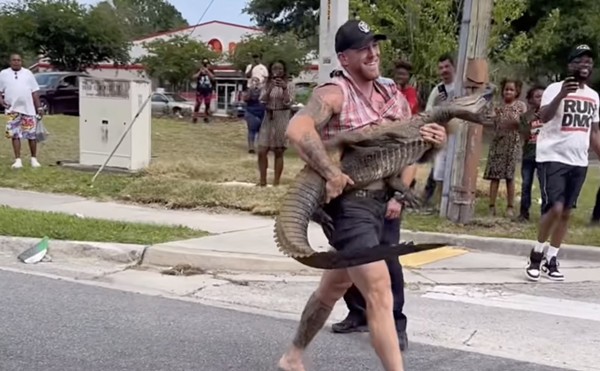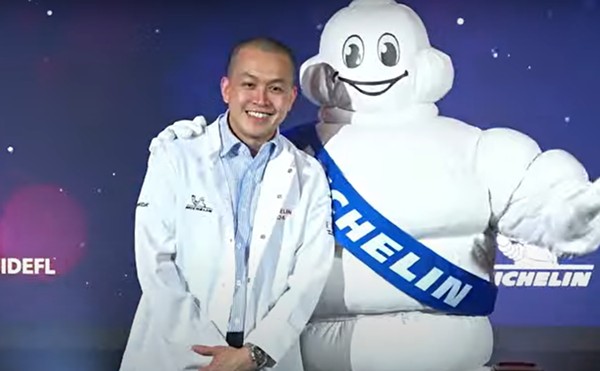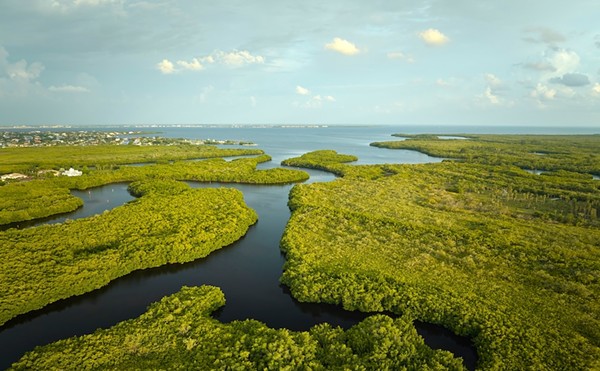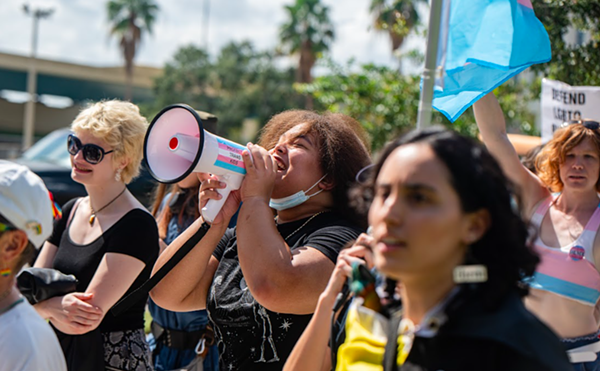Sara Van Arsdel, the director of the Orange County Regional History Center, recently gave her bosses reason to smile: The center, in its first full year at the renovated 1928 courthouse on downtown's new Heritage Square, actually turned a profit.
True, Orange County covers almost three-fourths of the museum's nearly $3 million operating budget, and Orange County Commissioners still fret a bit about those costs increasing in the future. Commissioner Ted Edwards even complained -- mildly -- that in a community of 1.3 million people the center should be able to pull in more than 85,000 visitors a year.
"We would all like greater, bigger and better numbers," Commissioner Homer Hartage, the board's premier arts advocate, responded to Van Arsdel's good news last month. "But these are really great numbers, and the museum finished in the black. And I think one of the concerns when [Van Arsdel] came to us for funds ... was that we would not finish in the black, because so many of our institutions are having problems."
Indeed they are. One need only recall the financial fiascoes that preceded taxpayer bailouts of the Orlando Science Center and the now-shuttered Civic Theatres of Central Florida to celebrate the fact that a publicly funded cultural institution isn't proceeding on crutches.
The arts in general still face obstacles. Most prominently, arts advocates have had to scale back their hopes for the windfall they were promised this year through Orange County's tourism tax. Those dollars -- once estimated to be as much as $3 million a year -- dried up with the post-Sept. 11 tumble in visitors in Central Florida. This week, arts groups were guaranteed no more than $500,000 -- still a sizeable first-time investment from tourist taxes, but substantially less than expected.
Commissioners presumably would be less surprised by the history museum's success if they weren't already so familiar with the science center's failings.
The latter's troubles began in 1997, when the science center built a beautiful domed facility in Loch Haven Park, just steps away from the building it formerly shared with the history center. (That old building is now the sole residence of the Orlando-UCF Shakespeare Festival.) The new center cost $49 million, more than half of which came from tax dollars. But after a successful first year, attendance plunged. Dull, static exhibits failed to lure repeat visitors. The center went $1.6 million in debt.
Repeatedly, its administrators went to Orange County and the city of Orlando for bailouts, to the point where the city now gives the science center $300,000 to $400,000 a year. The county, meanwhile, set aside a portion of proceeds from the tourist tax and created an arts council so it could dodge hearing the science center's -- and other cultural groups' -- ongoing pleas.
At least some of the history center's success, Van Arsdel told the county commission, came from avoiding the science center's mistakes. The history center hired a comptroller and established a finance committee to examine revenues. Moreover, it relied heavily on volunteers and partnered with more than a dozen organizations for marketing and money.
"We realized from the beginning that we had two audiences," Van Arsdel says. The first -- students on field trips -- is stable. The second, new and repeat adult visitors, "they want to see other things," she says.
In that vein, the history center kept its exhibits fresh, bringing in "Pirates!" from Key West just three months after opening. Then came "Blast Off: From Sci-Fi to Space Flight," which analyzed the parallels between fiction and reality. The future lineup includes an exhibit on Florida rock & roll legends and another on African-American artists who sold their work on roadsides. That's in addition to events that have helped fill the park outside its door, such as Orlando's first Harley-Davidson Bike Week rally and the 10-day Orlando International Fringe Festival. And the center hopes to attract visitors with its participation in the new, monthly "Third Thursdays" downtown arts-and-culture promotion.
"We're trying to earn a niche," says Van Arsdel. In fact, much of her work is aimed at imbedding her center in the fabric of downtown -- and so far it's paying off.
While the history center learned from the science center's mistakes, did the science center do the same?
Apparently yes. For the first time in four years its books are balanced, and its debt -- now less than $400,000 -- should be paid off next year, says science center spokesman Jeff Stanford.
Science Center Director Kim Cavendish, who was recruited two years ago to solve the crisis, cites revolving exhibits, better fund raising, fat-trimming (its budget was sliced 35 percent, from nearly $10 million to about $6 million) and increased city and county support for the turnaround.
Cavendish, though, faces challenges that Van Arsdel doesn't. For one, the history center is a public-private partnership between the county and the Orange County Historical Society, with the county contributing 73 percent of its operating budget. In contrast, public funding for the science center -- $300,000 each from the county and city in the last budget year -- totals just 10 percent of its budget.
Still, Cavendish says, not seeking more public support was one of the science center's early errors. "What people expected in the science center that hadn't been clear to people, and to the science center itself, was that government support would be necessary," she says. "You'll find in successful, sophisticated communities, local government is going to be providing a modicum of support. It gives you a core you can count on."
While the science center, with roughly 318,000 visitors a year, generates more income through admissions than the history museum, that government support is vital, says Cavendish. For that reason, the science center will approach the county's new arts advisory council for more money later this year. The history center won't have to; its funding is separate from the 3 percent of tourist taxes newly allocated for the arts.


















